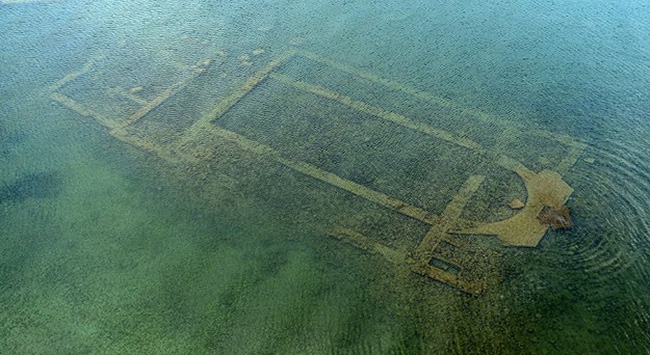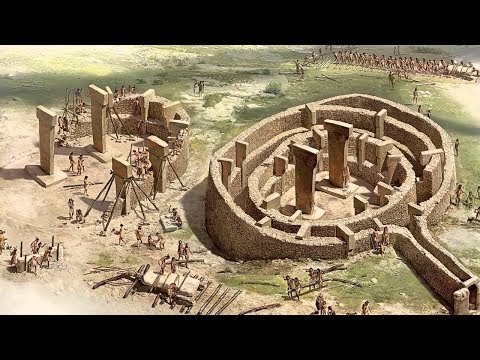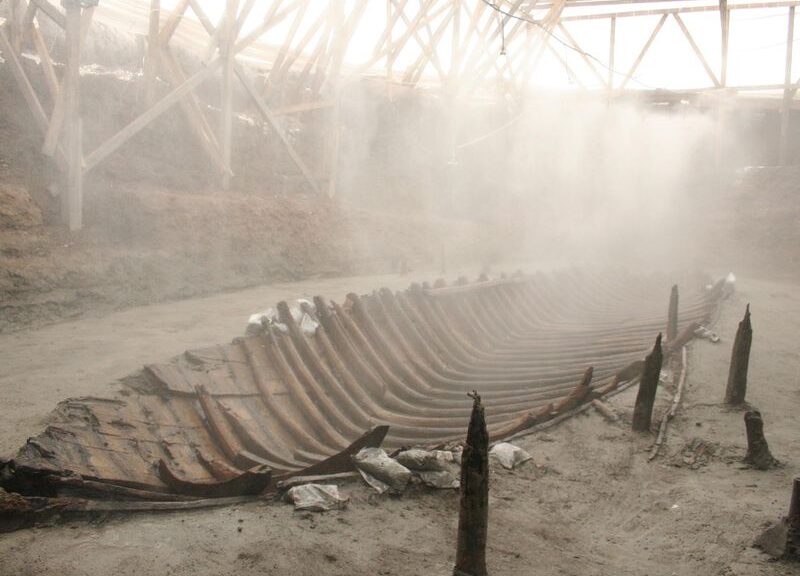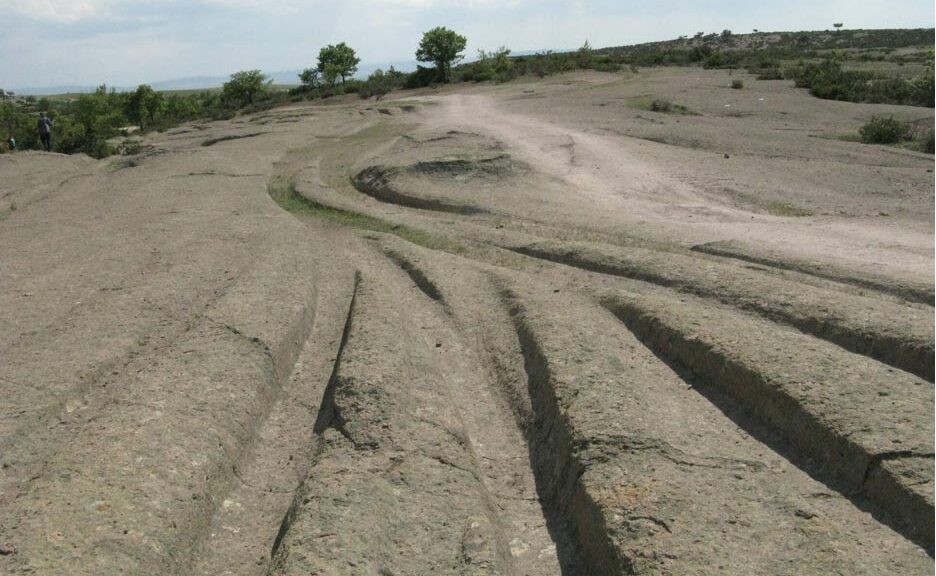Traces of 5th-century Byzantine basilica were spotted under the water of turkey lake
Researchers first dive themselves in the ruins of an almost 1600-year old basilica that was recently discovered under Lake Tusnik during a video shooting from the air About 20 meters from the coast was discovered in the early Byzantine basilica, which has the remains of early Christian architecture.

The basilica has been inspected in depth by a professional diving team that has arrived in the northeastern Bursa province at the request of Bursa Municipality, Experts in the diving team made technical observations and measurements in the main body of the basilica.
In the area where the basilica was found the team, including the underwater Director of Photography Tahsin Ceylan, the underwater archaeologist Emre Savaş and worldwide underwater freediving record holder Śahika Ercüment moved to the area where the basilica was discovered.
The team, which was also accompanied by the archaeologists of the İznik Museum Directorate, remained underwater for some 2,5 hours.
The rite room and naves, which separate the structure into three main parts, were closely monitored and photographed.


Ercümen said that he was used to diving into deep waters in record attempts, the depth of the sunken basilica was shallow for him but deep in terms of history. He said,” It was a special event to dive into such a significant point, which is very important for Christianity.
A good scientific team was formed here and I joined it as a tubeless diver. Being underwater there brings to 1,600s. I believe that lots of history and water sports aficionados will come here to dive here in the coming days.”
Director of photography Ceylan said that they were working for the Culture and Tourism Ministry, adding that they could not say anything about the archaeological remains underwater and would give their data to the museum.
“Museums officials will evaluate the data that we obtained underwater. It will be the decision of the Culture and Tourism Ministry to launch this region as a protected site or use it for diving purposes. As an underwater diver, I hope it will contribute to diving tourism,” Ceyla said.
Turkey Underwater Sports Federation Diving Centers Committee member and diving trainer Kubilay Kılıç said that their work with archaeologists showed that it was a pretty big church with one-meter think walls.
He said that the structure should be taken under protection, adding, “It is said that it has a history of 1,600 years. It has a semicircle apse in the entrance, two naves, and cists. It is a very beautiful cultural heritage.”
Collapsed during an earthquake
Archaeologists, historians, and art historians, who are working on the church, estimate that the structure collapsed during an earthquake that occurred in the region in 740.
They found out that it was built in honor of St. Neophytos, who was killed aged 16 by Roman soldiers in 303 before the Edict of Milan, a proclamation that permanently established religious toleration for Christianity within the Roman Empire.
Uludağ University Head of Archaeology Department Professor Mustafa Şahin said that they had obtained significant information about the basilica. “The church was built in the 4th – 5th century because it has similarity to the plan of İznik’s Hagia Sophia Church,” he said.
Şahin said that they had encountered the name “St. Neophyts,” adding, “Neophytos is among the saints and devout Christians, who were martyred during the time of Roman emperors Dioclasien and Galerius when bans and punishments against Christians were common.
According to resources, he was a saint who was killed by Roman soldiers in 303, 10 years before the Edict of Milan that freed Christianity.”
Şahin said that the church was established with his name in the place where he was killed. He said that the date of the church construction was not precisely determined but it could have been built after 313.


























